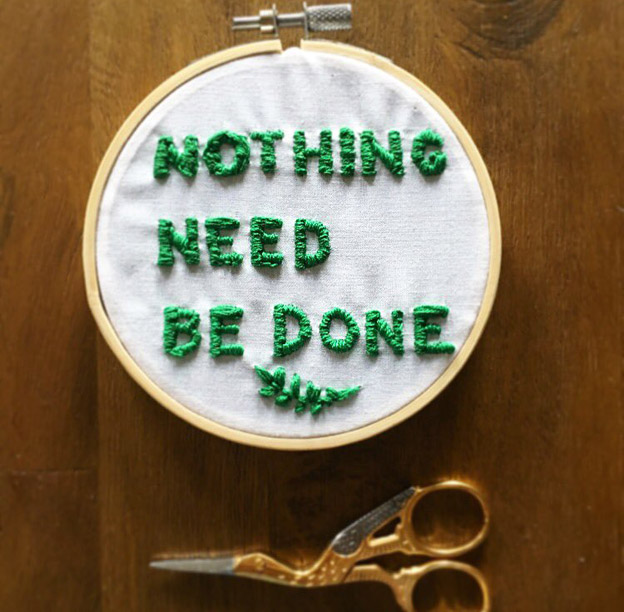
Mad About Monks
Shayne Clarke’s ideas in “Rules for Pregnant Nuns and Married Monks” (Summer 2016) are in part an important contribution to Buddhist studies and in part sensationalism.
I commend Clarke for his emphasis on using all textual lineages of early Buddhism, for pointing out the human side of early monastic Buddhism, and for his enthusiasm in getting original texts translated.
However, his approach does suffer from serious shortcomings. One glaring problem, for instance, is his exclusive reliance on the monastic vinaya, which focuses on the misbehavior of monastics. Because it does not represent the overall conduct of the monastic community, his approach is like trying to establish the general norms of behavior for a particular society from its criminal records: the outcome, of course, would be lopsided and of dubious value. To attain a more balanced view, Clarke would have done well to take account of the broader literature of early Buddhism, especially the sutras.
It is not just the lack of overall perspective that mars Clarke’s approach. A number of details in the interview are based on misinterpretations and misreadings, and some of his claims are misleading and lacking in textual support, not to mention made at the expense of monastic Buddhism. Here are a just few:
. . . for the monk who commits the first parajika, in all Buddhist monastic law codes, apart from the Pali texts, there is a process by which this person can remain within the sangha in a demoted status. . . . If we look at the other traditions, we might say, from a Westerner’s perspective, they’re more “Buddhist.” It’s a more compassionate response.
The Pali text is in fact silent on this issue, which implies that the person may remain in the monastic community as a novice monk or nun. This is similar, perhaps identical, to the “demoted status” mentioned in the other vinayas. All the vinayas are in fact very compassionate in the way they deal with misbehavior.
So he [the monk Sudinna] has sex with his wife, but then he goes on to attain arhatship after that, which is the goal of Buddhism.
A careful reading of the Pali makes it clear that it was Sudinna’s wife and son who became arhats, not Sudinna himself. If one is going to make such controversial claims, one should make doubly sure that one has properly understood the source material.
. . . the vinayas . . . are strictly in-house documents, for monastic eyes and ears only—and perhaps for good reason!
A large number of cases are recorded in which the Buddha laid down rules based on laypeople’s criticism of monastic behavior, and there is no evidence that he did not want them to know the monastic rules. In fact, the account of the first council states that the monastic rules were known to householders.
There is much more to comment on in the interview, but this should suffice to give a flavor of the problems with Clarke’s analysis. Instead of helping a broader audience appreciate the historically central role of monasticism in the preservation, practice, and realization of the highest Buddhist ideals, Clarke creates a caricature of monastic Buddhism in ancient India.
–Ajahn Brahmali
Vice-abbot of Bodhinyana Buddhist Monastery
Perth, Australia
Shayne Clarke responds:
I thank Venerable Brahmali for his praise and critique.
Venerable Brahmali is correct that it is not Sudinna but his wife and son who attain arhatship.
Much to my chagrin, something went awry at this point in the published interview, for which I cannot account; I can but apologize and ask that this sentence be retracted. Happily, however, the only thing marred by this oversight is this one line in the interview. I do not hold the view that Sudinna attained arhatship. In my book Family Matters in Indian Buddhist Monasticisms, on which the interview is based, I observe:
[The] story of Sudinna is . . . one of monastic failure: a monk who has sex while still a monk could not be otherwise. That, of course, is Sudinna’s role in this literature: a foil intended to teach other monks how to behave correctly through his own misdeed. . . . The authors/redactors of these law codes include within this very narrative an account of Sudinna’s son’s attainment of the fruit of arhatship. . . . Moreover, in . . . the Pali Vinaya, we find reference to the attainment of arhatship by Sudinna’s wife, known as Bijakamata, Mother of Bijaka. Sudinna himself becomes known as Bijakapita, Father of Bijaka. Arguably, by renaming Sudinna and his wife after their son, an arhat who succeeded where his own father failed, the monastic authors/redactors all but state that Sudinna’s story, the story of a monk who was rebuked but not expelled for fulfilling his familial duty of begetting a son, was one of both religious and familial success.
Venerable Brahmali asserts that the Pali Vinaya’s silence with regard to provisions known as parajika penance in other vinayas “implies that the person may remain in the monastic community.” I fear that this claim is likely to find little support other than a distant nod in my article “Monks Who Have Sex,” where I cite anthropological evidence suggesting that something similar to parajika penance is practiced in certain Theravada traditions despite the lack of any textual warrant in the Pali Vinaya. I disagree, however, with the assertion that silence implies the possibility of atonement.
The claim that “there is no evidence [the Buddha] did not want [laypeople] to know the monastic rules” ignores, for instance, the evidence that the Buddha purportedly forbade the recitation of monastic rules in the presence of laymen, a rule established on account of the actions of none other than Devadatta. It perhaps also ignores the prohibition against writing down the vinaya found, ironically, in the Mulasarvastivada-vinaya. That rules are delivered in response to lay criticism of errant monastics is well known, but this is not evidence that the laity had or should have access to vinayas, a topic debated even today in digital humanities.
Venerable Brahmali’s comparison of the vinayas with “criminal records” is unfortunate. Any such comparison of this rich, nuanced literature fails to appreciate the centuries of creativity and insight that went into crafting the most detailed instructions known to humanity for running a religiously and economically successful monastic institution, a literary corpus that tells the social historian much more about the nitty-gritty of Buddhist monasticisms than can be gleaned from idealized visions of the religious life found in sutras.
Our interview with Shayne Clarke in the Summer 2016 issue, “Pregnant Nuns and Married Monks,” incorrectly stated that the monk Sudinna attained arhatship. He did not. We regret the error, for which we were responsible.
–The Editors

The Great Relief
Just like Robert Chodo Campbell in “Death Is Not an Emergency” (Fall 2016), after telling many patients that they were dying, I have witnessed the great relief they experienced, hearing what they already know but are often unable to express to their families. The acknowledgment of dying allows them to focus on the dying process and say good-bye. I have heard families reminisce and even laugh and joke about fond memories, and I have even seen the dying participate in the planning of their own funerals. As Campbell explained, it is important to honor their faith. The truth sets them free.
–Robert Haile
Hampton, NH
Our “Buddhism in the Next Generation” panel sparked a lot of discussion between Tricycle readers and two of our panelists, Sebene Selassie and Qalvy Grainzvolt. See the entire conversation at tricycle.org/magazine/next-gen.
Is Anyone Awake, Anyway?
“In a way, it’s hard to put Western teachers on a pedestal, because they don’t seem realized or awakened to me. Do we even know what that would look like here? Do we have an example of that? The previous generation seemed to have had examples, but I’m not sure we do.”
This quote from Sebene Selassie in “Buddhism in the Next Generation” (Fall 2016) represents a big problem for me personally. I am 56 years old and have only been practicing for five or six years. Yet it seems that there are few (or maybe no) teachers out there who would consider themselves “realized” or “awakened,” even though many have been practicing for decades. It certainly does not make it seem very likely that someone my age has any chance of awakening.
–Craig
AZ
Sebene Selassie responds:
There’s a saying, not sure to whom it’s attributed, but I feel it sums up a beautiful possibility for each of us.
Rather than thinking of the big A, Awakening, we can experience “small moments, many times.” I find the more I practice, the more small awake moments I have. Many more than I used to and hopefully more to come.
Qalvy Grainzvolt responds:
Thank you for the comment and your candor, Craig. I agree that many small (buddha) moments accumulate into greater wisdom and awakening for each one of us who has devoted time to the practice of the dharma, as you have for these past 6 years. My teacher, Shinso Ito, has always encouraged accumulation of those small moments of awakening, especially during the course of daily living, through all the ups and downs of life and with all the opportunities for growth that exist.
There is an analogy from the Zen tradition that has always resonated with me about awakening. A “dharma rain” can drench an individual in an instant of awakening and realization, like being caught in a sudden downpour. Awakening also comes gradually. Walking through a field with dew on a dry day, over time, will drench one in the end as well. In both scenarios, one becomes drenched with and immersed in the dharma. As each one of us possesses beautiful and unique attributes, we can all look forward to getting our sleeves wet, so to speak, in various ways that fit our style of life and unique living situations. I am sure you have wonderful small buddha moments of awakening to share with the world. I try my best to follow those who seem to have their “sleeves wet” and offer guidance and teachings that are timeless yet applicable to the day and age.
Remote Dharma
I wonder how much one’s perspective might shift if one is not living in an urban environment with plenty of dharma centers and available teachers. For those of us who do not have access, whether because of expense or because we live far from dharma communities and teachers, the issue of younger- versus-older teachers seems somewhat remote.
I have been sitting for decades now, and have done some retreats, but I wonder if not having access to a teacher has been a hindrance. I do read a lot and practice based on a lot of those readings. Still, it’s not the same as having specific guidance.
–John Runnion
Cottonwood, AZ
Qalvy Grainzvolt responds:
I think your point about access to teachers is definitely important.
Buddhism as it started more than two millennia ago—an oral tradition that was passed down through generations—is so different from the Buddhism that exists in today’s digital landscape, which relies on a different kind of connectivity. I feel that while not having a local connection to a teacher can be a hindrance, the struggle of having to pursue the dharma more vigorously due to lack of access might actually be a benefit as well.
Sebene Selassie responds:
I appreciate your sharing, John. A lot of teachers work virtually now. My main teachers live far away and besides at retreats, I meet with them on Skype regularly.

Gary Snyder said this in an interview in @tricyclemag – it stuck with me, so I made this embroidery #supporthandmade pic.twitter.com/B9tvGYSI2O

Send letters to editorial@tricycle.com, post a comment on tricycle.org, or tweet us at @tricyclemag.
Illustrations by Roberto La Forgia
Thank you for subscribing to Tricycle! As a nonprofit, we depend on readers like you to keep Buddhist teachings and practices widely available.